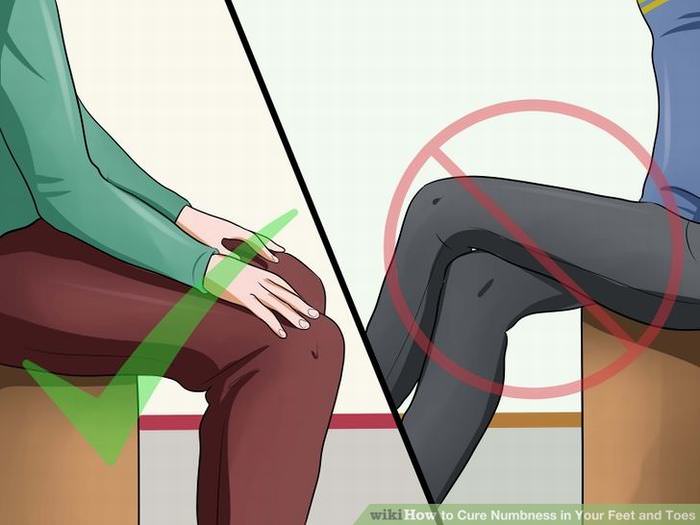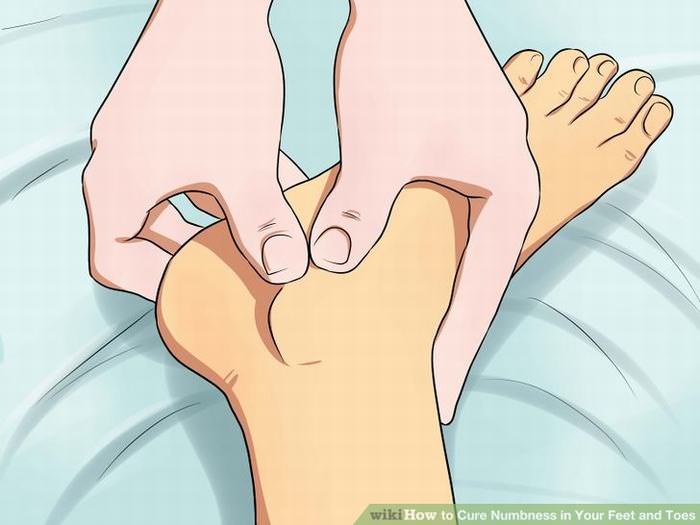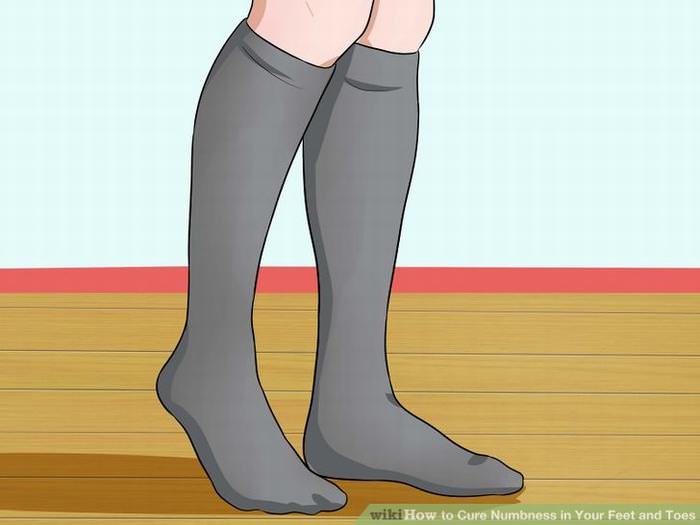Cure the Numbness in Your Feet and Toes with these Tips
THIS IS ONLY FOR INFORMATION, ALWAYS CONSULT YOUR PHYSICIAN BEFORE
HAVING ANY PARTICULAR FOOD/ MEDICATION/EXERCISE/OTHER REMEDIES.
FOR CROCHET DESIGNS- http://My Crochet Creations.blogspot.com/
FOR INFO ABOUT KNEE REPLACEMENT, YOU CAN VIEW MY BLOG
HTTP://KNEE REPLACEMENT-STICK CLUB.BLOGSPOT.COM/FOR CROCHET DESIGNS- http://My Crochet Creations.blogspot.com/
| That
feeling of numbness in your feet and toes can be caused by a variety of
conditions. Numbness is often accompanied by a tingling feeling. The
cause may not be serious - it can be as uncomplicated as paresthesia
(your foot 'falling asleep'), however it my be as serious as
diabetes, multiple sclerosis, or a symptom of a much more serious
condition. Whatever the cause may be, it is essential to address the
numbness in your feet. Avoiding to do so may affect your ability to
walk. |
|
Typical causes of numbness Numbness of the toes generally occurs due to conditions that affect the nerves or blood vessels to the foot. Most common causes of toe numbness include:
|
|
Method 1: Dealing with occasional numbness 1. Exercise |
|
Sitting or standing in one place for a long time may cause numbness. To counteract the problem, stimulate circulation in the foot by moving around. A short walk, or moving your foot as you are sitting down, will help too. In addition, bear in mind the following:
|
|
2. Change positions |

|
|
Certain sitting positions may cause numbness in your feet. Avoid sitting on your feet or crossing your legs for a long period of time. Should you sit for long hours, elevate your feet periodically to increase the blood flow. |
|
3. Avoid wearing excessively tight clothing |
|
Pants, socks or other tight garments worn on the lower part of the body might restrict blood flow to the feet, causing numbness. |
|
4. Massage the foot |

|
|
Massaging the area of the foot that feels numb will help increase circulation and reduce the effects of occasional numbness.
|
|
5. Keep your feet warm |
|
The cold may cause numbness and tingling. Reduce the effects by staying warm with a heating pad or heated blanket. |
|
6. Wear the right shoes |
|
High
heels or shoes that pinch the toes may cause numbness in the feet. This
may also arise from wearing shoes that are too small for you,
especially while exercising. Opt for comfortable shoes that fit you
well.
|
|
7. Book an appointment with your doctor |
|
While occasional numbness in the feet or toes caused by an uncomfortable seating position or tight clothing is nothing to worry about, a visit to the doctor is essential if it occurs frequently or lasts for more than just a few minutes.
|
|
Method 2: Dealing with Numbness Related to Diabetes 1. Get a diagnosis |
|
Chronic numbness in the feet and toes is often due to diabetes. The feeling of numbness occurs because it damages both the nerves and causes poor circulation in the feet. Numbness is usually one of the first symptoms of diabetes, so be sure to get tested immediately. It can be extremely serious for a diabetic, as they may not be able to feel pain, which may be caused by heat, punctures or blisters in the feet. In addition, due to the restriction of blood to the feet, diabetics' feet heal at a slower pace. Consequently, infection is a serious concern. |
|
2. Manage your diabetes |
|
The best way to prevent circulation issues and neuropathy is to keep your blood glucose levels in check. Here are some ways to go about it:
|
|
3. Lose weight |
|
Obesity can be a contributing factor to numbness in the feet and toes. Consequently, losing weight will help alleviate the symptoms. In addition, it may also help lower blood pressure (which may also have an effect on the numbness). |
|
4. Use products designed for diabetic foot care |

|
|
Compression
hose and socks help stimulate circulation, thereby decreasing numbness.
Special lotions that contain capsaicin, may also be applied in order
to relieve the numbness.
|
|
5. Ask your doctor about alternative treatments |
|
If nothing else seems to work, studies have shown positive results on relaxation techniques and biofeedback treatments, as well as anodyne therapy (a painkilling drug or medicine). |
|
Method 3: Dealing with chronic numbness, caused by other conditions 1. Get treatment for injuries |
|
Numbness
can occur as a result of injuries to the feet, toes, ankles, head or
spine. In which case, an orthopedist, neurologist or chiropractor may
help treat the injury and relieve the numbness.
|
|
2. Discuss any medications you are taking with your doctor |
|
Numbness may also be caused by chemotherapy drugs and many other prescription drugs. If you experience numbness after starting a new medication, discuss the effects with your doctor. On this note, it is important to never stop taking your medication without talking to your doctor first. |
|
3. Take vitamin supplements |
|
Numbness may also be caused by a lack of vitamin B12 or other vitamins. In order to check your vitamin deficiencies, get a blood test and start taking the recommended supplements if need be. |
|
4. Take medication for chronic conditions |
|
Numbness in your feet and toes may also be a symptom of a number of underlying conditions, including multiple sclerosis, arthritis, Lyme disease and more. In which case, it is important that you treat and take medication for the underlying condition. |
|
5. Reduce your alcohol consumption |
|
A numbing sensation in the limbs, particularly the feet and toes, may also be caused by heavy alcohol consumption.
|
Labels: diabetes, don't sit crossed-legs, Exercise, feet, frostbite, keep feet warm, lose weight, massage, multiple sclerosis, No alcohol, numbness, toes, vasculitis, wear loose clothes

0 Comments:
Post a Comment
<< Home